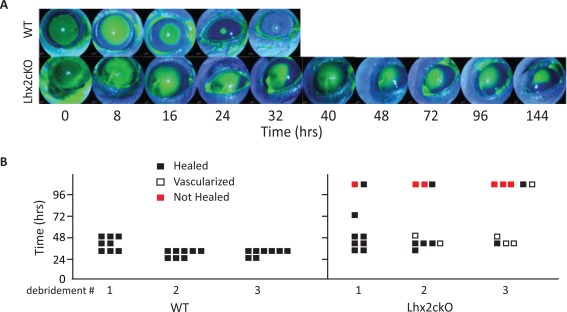Figure 5.

Corneal epithelial wound healing is impaired in Lhx2cKO mice.
We assessed the renewal capacity of the corneal epithelium in WT and Lhx2cKO mice by inducing consecutive epithelial injuries and visualizing the area of the debridement by fluorescein staining. The mice were subjected to cornea epithelial debridement three times, allowing a week to recover between each procedure (see Materials and Methods). In general, WT mice healed their epithelium consistently at 32hrs post‐injury, whilst a significant subset of Lhx2cKO mice demonstrated markedly delayed wound closure. After a third epithelial debridement, WT mice healed their epithelium at 32hrs while most Lhx2cKO had persistent epithelial defects at 144 hrs post wounding (typical example of this marked delay in healing shown) (A). A detailed graphical representation of all epithelial debridements showed that Lhx2cKO mice (far right panel) have a reduced healing capacity after repeated debridement and presented corneal complications, such as corneal neovascularization and perforation that were not observed in the WT (far left panel) (B). Abbreviation: WT, wild type.
